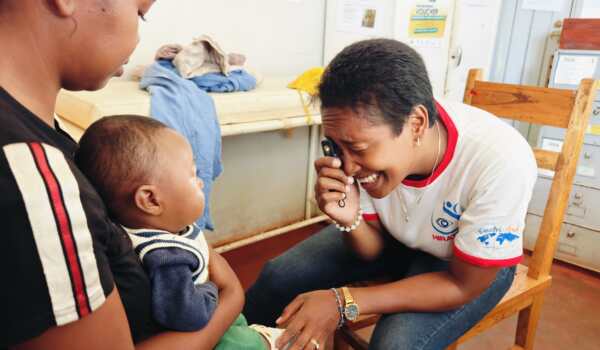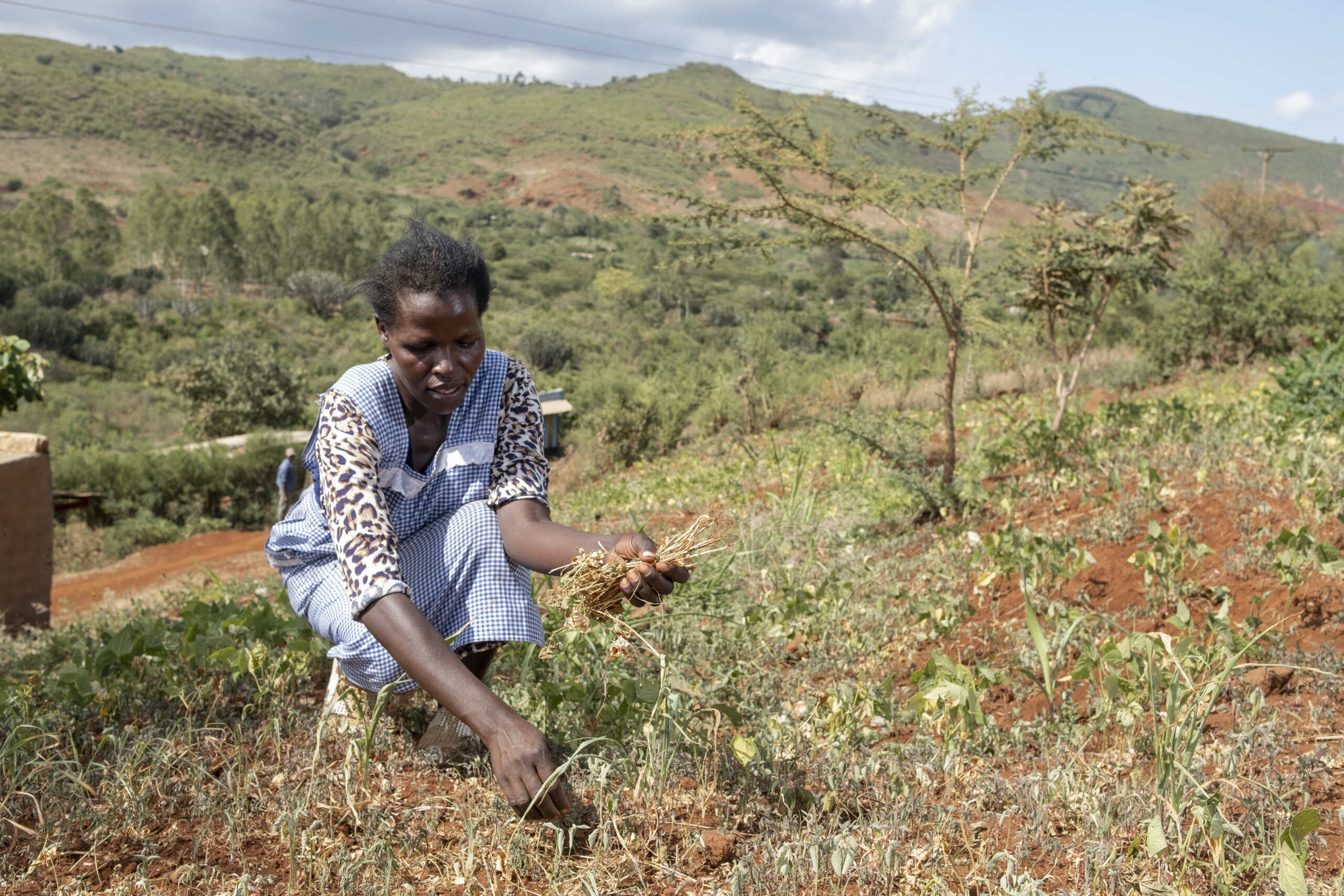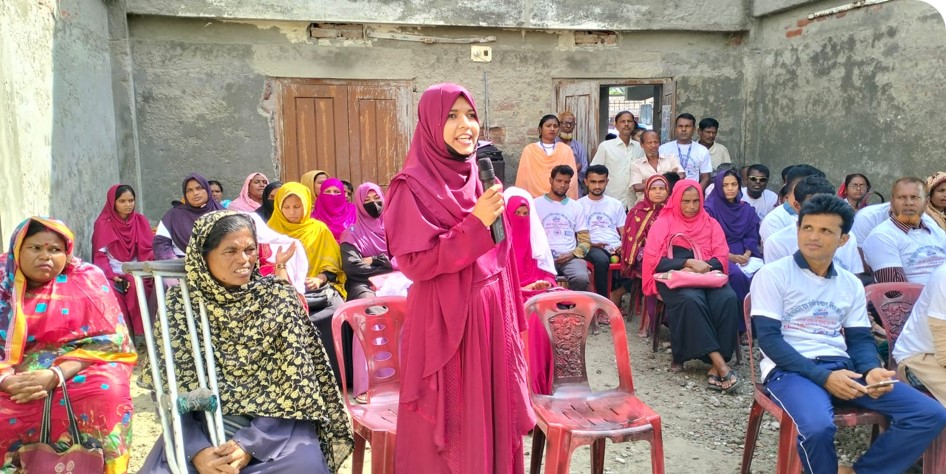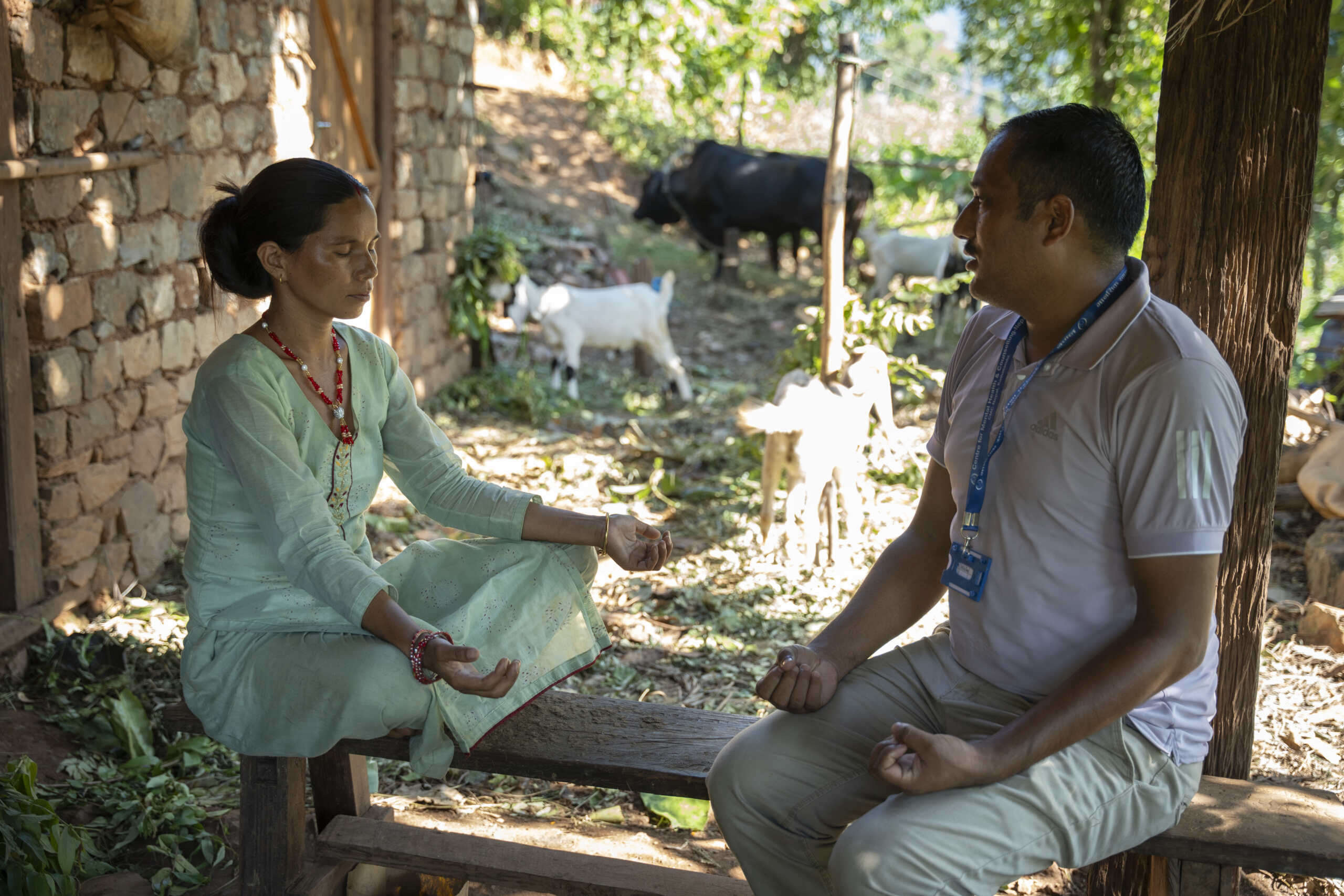Lighting the Path to Sight: How Early Eye Screening is Changing Children’s Futures in Madagascar
News | October 8, 2025
Every child deserves the right to sight
In Madagascar, thousands of children risk losing their vision, and sometimes their lives, to preventable eye diseases. Without early screening, conditions such as congenital cataract, glaucoma, and retinoblastoma, a rare but deadly eye cancer, often go unnoticed until they cause irreversible damage.
To change this, CBM Global, in partnership with CBM Ireland, the Malagasy Lutheran Church Health Department (SALFA), and with support from Electric Aid (Ireland), launched a pilot programme in the districts of Antsirabe I and II. The goal: to bring early eye screening to every child, who are of vaccination age, and build an inclusive health system where no one is left behind.
At the heart of this effort is a small, solar-powered device called the Arclight — a portable, affordable ophthalmoscope developed by the University of St Andrews. It allows trained health workers to examine a child’s eyes and detect abnormalities early, even in the most remote settings.
“Early screening saves lives and helps prevent avoidable disability,” says Lala Jaona Iandrinirina, CBM Global’s Inclusive Eye Health Advisor. “It’s a powerful example of equitable, inclusive healthcare in action.”

Bringing eye care to where children are
From October 2024 to June 2025, nearly 100 primary health workers and 161 community health agents, most of them women, were trained to use the Arclight and to raise awareness about children’s eye health in their communities.
Their reach was extraordinary:
- 34,422 children were screened in local health centres (CSB)
- 272 more were reached during outreach activities in rural villages
Children showing signs of eye abnormalities were referred to the SALFA Ophthalmology Clinic in Antsirabe for diagnosis and treatment. Severe or complex cases were transferred to the Joseph Ravoahangy Andrianavalona University Hospital (CHU JRA) in Antananarivo for specialised care.
One of those children was a nine-month girl whose mother noticed that one of her eyes looked cloudy in photos. Thanks to the screening, she was diagnosed with retinoblastoma and referred immediately for treatment. Today, she is recovering — a powerful reminder that early detection can mean the difference between sight and blindness, and sometimes between life and death.
What the results revealed
The pilot revealed both the scale of the challenge and the strength of community-led action. Among the 100 children referred, the most frequent confirmed diagnoses were:
- Allergic conjunctivitis (24%)
- Bacterial conjunctivitis (17%)
- Vitamin A deficiency (6%)
- Congenital glaucoma (5%)
- Cataract (3%)
- Retinoblastoma (6%)
Of the six children diagnosed with retinoblastoma, three have fully recovered following surgery and chemotherapy. Unfortunately, two passed away due to advanced cancer. This underscores the urgency of early screening.
But one finding stood out above all:
Out of more than 34,000 children screened, only one false positive was recorded — a false positive rate of just 0.0029%.
This remarkable accuracy reflects both the quality of the training and the reliability of the Arclight tool, building trust among families and confidence in local health systems.
“Before, parents didn’t believe we could detect eye problems so early,” said Ratolojanahary Sylvain Rolland, a community health agent. “Now they see the difference — and they accept to bring their children willingly.”
Beyond eyes: seeing the whole child
The project’s outreach activities also uncovered another layer of need. In four remote fokontany (villages), 272 children were screened, and 88 received treatment — not only for eye conditions but also for malnutrition (56%).
This finding highlighted how eye health and child nutrition are deeply linked. By reaching children in their own communities, the programme became a bridge to broader healthcare — ensuring that no child was left unseen, untreated, or unsupported.
Psychosocial support was also vital. A team of trained social workers helped families process difficult diagnoses, adhere to treatment plans, and find hope during long hospital stays. Parents of children with retinoblastoma, for example, received emotional support and practical guidance throughout their journey.
Collaboration that changes systems
This success was built on strong partnerships — between community health workers, government health services, and referral hospitals — proving that when systems work together, lives change.
The project also contributed to national learning. Data and experiences from Antsirabe are informing policy advocacy for integrating newborn eye screening into Madagascar’s national health plan, alongside continued training and system strengthening.
By combining screening, referral, psychosocial care, and community awareness, the project created a model of inclusive health that can be replicated in other regions of sub-Saharan Africa.
“When we detect early, we protect futures,” says Dr Richard Randriamampihantona Raberisoa, Ophthalmologist at SALFA Antsirabe. “This small solar-powered light has brought new hope to families — and proof that equitable healthcare is possible, even in low-resource settings.”
A vision for the future
The integration of paediatric eye screening using the Arclight has shown that early intervention is not only possible — it is powerful. It saves sight, prevents avoidable disability, and strengthens communities.
Beyond the clinical outcomes, it has built capacity, fostered trust, and paved the way for lasting change.
As CBM Global continues to advocate for inclusive eye health worldwide, this project shines as a beacon of what can be achieved when innovation meets compassion, and when partnerships put people first.
On World Sight Day
CBM Global celebrates the parents, health workers, and partners who are lighting the path to a clearer future for children in Madagascar — one eye, one life, one story at a time.
Because every child deserves to see the world — and to be seen.
https://cbm-global.org/news/early-eye-screening-madagascar
Related News

COP30 Is a Turning Point for Disability-Inclusive Climate Action
As the world gathers in Belém, Brazil, from 10–21 November 2025 for COP30, the message from...

Achieving resilience for all requires funding disability inclusion in DRR
On International Day for Disaster Risk Reduction (DRR) 2025,...

The Vital Role of Mental Health and Psychosocial Support in Humanitarian Emergencies
Why Mental Health Cannot Be Overlooked When disasters strike, whether...
